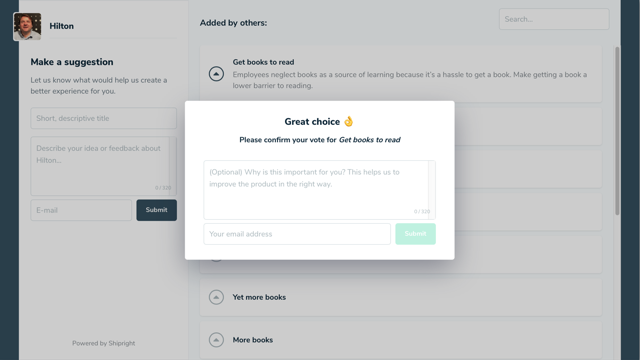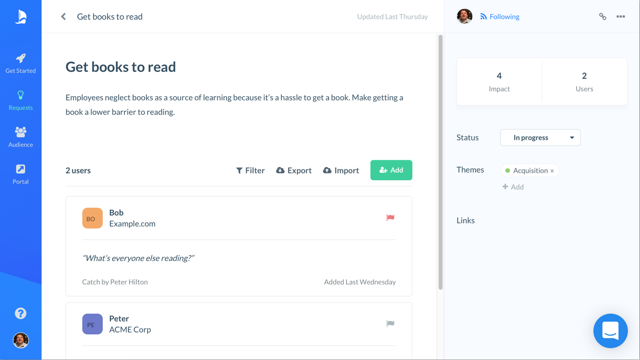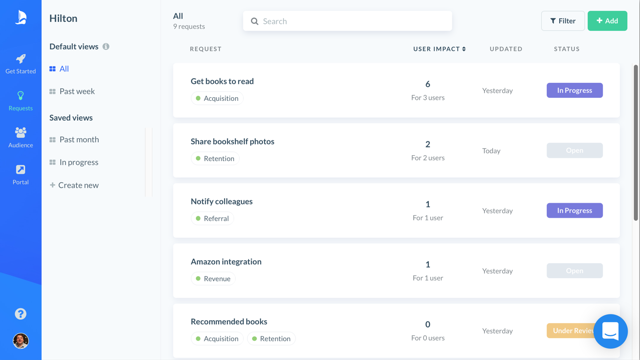B2B SaaS review: Shipright
A single source of truth for your customers’ product feedback 2020-07-01 #product #review
In my productboard review, I wrote that the value of a system of record for all customers’ product feedback makes up for the product’s price and complexity. Shipright - a newer less mature and more lightweight solution - focuses on that most valuable part.
Collecting feedback
Shipright lets you submit feedback directly in the main application, via a Chrome browser plug-in, Slack, or via a public customer portal, such as the Shipright’s own itself. Customers can also use the portal to vote for previous requests, adding their own feedback:
Shipright splits feedback into requests (e.g. feature requests) and user feedback, which lets you collect related feedback from different people. This results in a product request with a title and description, and a list of user feedback.
The relationship requests and their feedback enables Shipright’s most important capability: the weighted user impact score that makes customer demand visible. In this example, Bob’s importance weighting (shown by a red flag) makes their feedback count for three points instead of one:
A feature request also has comments, and a development status and themes that you can use to organise the great volume of requests that you hope to collect.
Organising feedback
Shipright’s value comes from its single source of truth about what customers want, as a selection of collections of requests. Shipright’s saved views provide these selections, filtering the list by date, status, audience (user, company or segment), and themes.
I like how Shipright lets you group these themes, so you don’t mix up the product components, time horizons, long-term initiatives, objectives, and other ‘tags’.
Better than spreadsheets
Shipright belongs to the business software category that primarily competes with spreadsheets (assuming that you actually collect product feedback). In recent years, spreadsheets have improved their multi-user collaboration, and web-based database capabilities in tools like Notion and Smartsheet make it easier to manage structured data. Nowadays, you don’t always need task-specific software to collaborate on a single source of truth application. However, Shipright has capabilities that general-purpose tools still can’t do.
Shipright provides multiple channels to gather data from as many people as possible. The available data ultimately constrains the value of a system like this, so you need everything that lowers the barrier to providing input. In general, most customers won’t provide feedback, so improvements in the proportion of customers who do can have a big impact on product management decision quality.
The Shipright team plans to add a second strength, as the product develops: integration with relevant tools, such as Jira, Github, Gitlab and Figma. That kind of integration gets you more value for the data you have, at less effort. After all, data about product requests feeds into activities that you probably already use other tools for, such as design, roadmapping and development release planning.
Conclusion
You shouldn’t manage product feedback in a spreadsheet, and Shipright offers a more usable and affordable than some of the alternatives.
Compared to the default spreadsheets approach, anything with collaboration and usability will perform better. How much better depends on the trade-offs between guidance and flexibility for both process and data models, and how well capabilities like integration with other software and search work.




